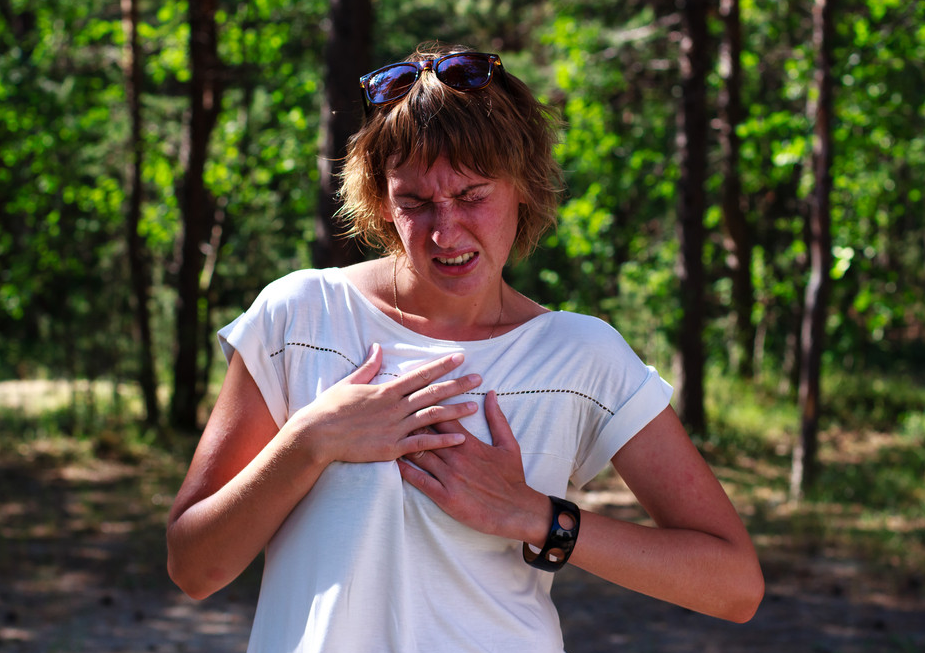
Patients with chest congestion, pain, the common cause of cardiac diseases, such as coronary heart disease, myocardial ischemia and so on.
In addition, it may also be caused by digestive diseases such as reflux esophagitis and hiatal hernia, or respiratory diseases such as pleurisy, pleural effusion, pneumothorax, or chest wall diseases such as rib inflammation and muscle strain, as well as mental and psychological factors such as anxiety, depression, tension.
Patients need to go to the hospital for CT, gastroscopy and other examinations, and take appropriate treatment after a clear diagnosis.
1, cardiac system diseases: including coronary heart disease, myocardial ischemia, myocarditis, etc., patients with mild symptoms and short onset time, chest congestion, pain called angina pectoris.
If the patient's symptoms are severe and the pain lasts a long time, the possibility of acute myocardial infarction should be alerted.
2, digestive system diseases: in addition to the heart behind the sternum, there are stomach, diaphragm, esophagus, etc., if the patient has esophageal hiatal hernia, reflux esophagitis, or esophageal inflammation, space occupying lesions, stomach contents are easy to reflux into the esophagus, resulting in esophageal mucosal erosion or ulcers, there will be chest congestion, pain symptoms.
In addition, it is generally accompanied by black stool, vomiting and other symptoms;
- Respiratory diseases: shortness of breath and cough are more common, but some patients will also have chest congestion and pain, such as pleurisy, pleural effusion, pneumothorax, pulmonary embolism and so on.
Among them, pulmonary embolism is not only a pulmonary disease, but also a large vascular disease, which will appear in the lower extremity vein thrombosis, blood flow difficulty will return to the pulmonary artery, the main trunk or branch of the pulmonary artery will be blocked, there will be chest congestion, pain symptoms;
4, chest wall disease: near the chest wall, including ribs, sternum, soft tissues, nerves, muscles, skin, etc., if there are lesions in these tissues, it can also be manifested as chest congestion and pain.
Common diseases include costitis, chondritis, muscle strain, herpes zoster, etc.
5, mental and psychological factors: in addition to the above organ and tissue lesions, some patients have chest congestion and pain, which may also be caused by mental and psychological factors, such as anxiety, depression, tension, etc.
Such patients are often due to psychological suggestions, or the existence of anxiety disorders, depression and other diseases, resulting in body electrolyte disorders, resulting in chest congestion, pain and other symptoms.
Some patients in a closed environment with no air circulation for too long, will also appear chest congestion, pain symptoms.
If the patient has chest congestion and pain, you can first determine the specific cause of the patient's age, or there are long-term smoking, high blood pressure, diabetes, hyperlipidemia, family history of heart disease, obesity and other factors, consider heart disease.
If the patient has chest congestion, pain, accompanied by sore throat, cough and other symptoms, it is considered to be respiratory disease.
If it is caused by digestive diseases, it is often accompanied by other related symptoms, such as nausea, vomiting, bloating, diarrhea, etc.
If the bone, muscle, or soft tissue of the chest wall is diseased, the specific pain location can be found by touching the body surface.
If the patient is unable to judge by himself, he should see a doctor in time, and be judged and treated by a professional doctor.

